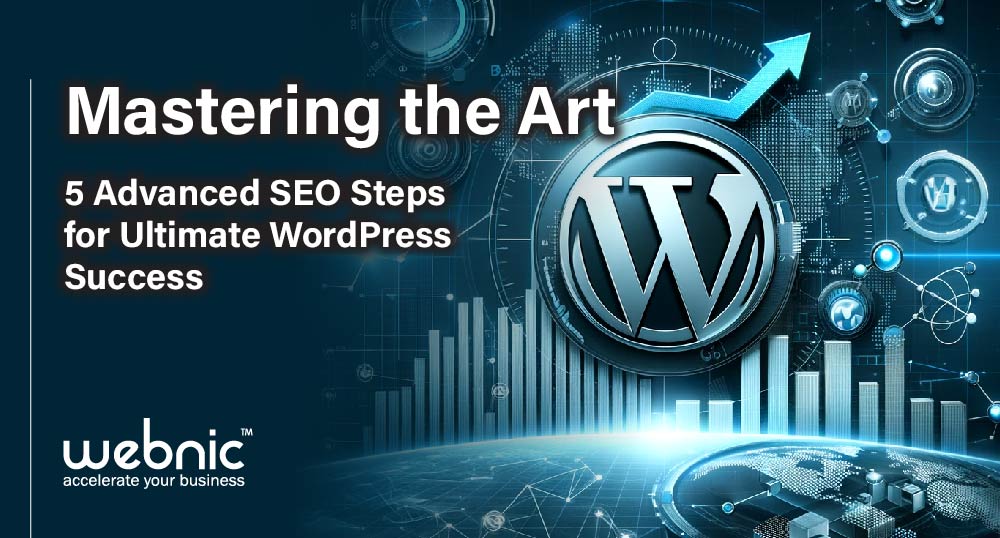Explore the advanced realm of optimizing your WordPress website for search engines with our newly titled guide: “Welcome to the Next Phase of SEO Mastery.” If you’re prepared to enhance your SEO endeavors, this comprehensive resource offers 5 steps instructions on advanced strategies that surpass the basics. By the conclusion of this enlightening journey, you’ll possess the expertise needed to catapult your WordPress site to unprecedented heights in search engine rankings.

Step 1: Content Silos and Internal Linking
What to Do:
Begin by meticulously categorising your content into distinct themes or topics that resonate with your audience. These themes will serve as the foundation for your content silos. Create a hierarchical structure by grouping related content under each theme, ensuring a logical flow of information for your visitors.
Once your content silos are established, dive into internal linking. Connect relevant articles within these silos using natural and contextually appropriate anchor text. The goal is to guide users through a seamless journey, allowing them to explore related content effortlessly.
Why it Matters:
This strategic approach enhances the overall user experience and significantly improves SEO. Search engines can better understand the context and relevance of your content, leading to a more favourable ranking. Moreover, the internal links distribute authority throughout your site, boosting the visibility of individual pages.

Step 2: Accelerated Mobile Pages (AMP)
What to Do:
Choose a reputable AMP plugin that aligns with your WordPress site’s needs. Install and configure the plugin to generate Accelerated Mobile Pages for your content. Once implemented, use Google’s AMP testing tools to ensure that your AMP pages are error-free and fully optimised for mobile users.
Continuously monitor the performance of your mobile pages, keeping a close eye on loading times. Address any issues promptly to guarantee visitors a fast and smooth mobile experience.
Why it Matters:
Mobile optimisation is non-negotiable in today’s digital landscape. Adopting AMP provides a faster mobile experience for your audience and aligns with Google’s preference for mobile-friendly content, positively influencing your site’s search rankings.

Step 3: Schema Markup for Rich Snippets
What to Do:
Integrate schema markup into your content using structured data. Choose the appropriate schema types for different content types on your website, whether they’re articles, events, or products. Validate your implementation using Google’s Rich Results Test to ensure that rich snippets appear as intended in search results.
Why it Matters:
Schema markup adds more information to your content, resulting in visually appealing and informative search results. Rich snippets stand out, attracting more attention and potentially increasing click-through rates.

Step 4: Optimizing for Voice Search
What to Do:
Understand how users phrase questions in voice search and identify common queries relevant to your content. Develop content that directly addresses these queries, focusing on providing concise and informative answers.
Incorporate long-tail keywords and natural language patterns into your content. This aligns with how people speak and increases the likelihood of your content being featured in voice search results.
Why it Matters:
Voice search is rising, and optimising lets you capture a growing user base. You enhance your content’s relevance and visibility in voice search results by aligning your content with conversational search patterns.

Step 5: Advanced Image Optimization
What to Do:
Enable lazy loading for images, prioritising the loading of visible content first for a more seamless user experience. Ensure your images are responsive, adapting to different screen sizes without compromising quality. Optimise alt text for images with descriptive and relevant information, improving accessibility and providing context to search engines.
Why it Matters:
Advanced image optimisation techniques contribute to improved page load times, which is especially crucial for users on slower connections. Descriptive alt text not only enhances accessibility but also increases your images’ visibility in search results.

Congratulations! By following these advanced SEO strategies for your WordPress site, you’ve optimised search engines and significantly enhanced the overall user experience. As you continue this journey, remember to stay vigilant, monitor performance regularly, and adapt to evolving SEO trends to maintain and further improve your WordPress success. Happy optimising!

